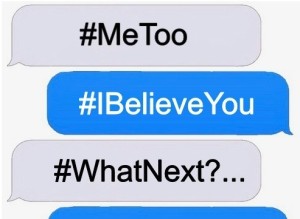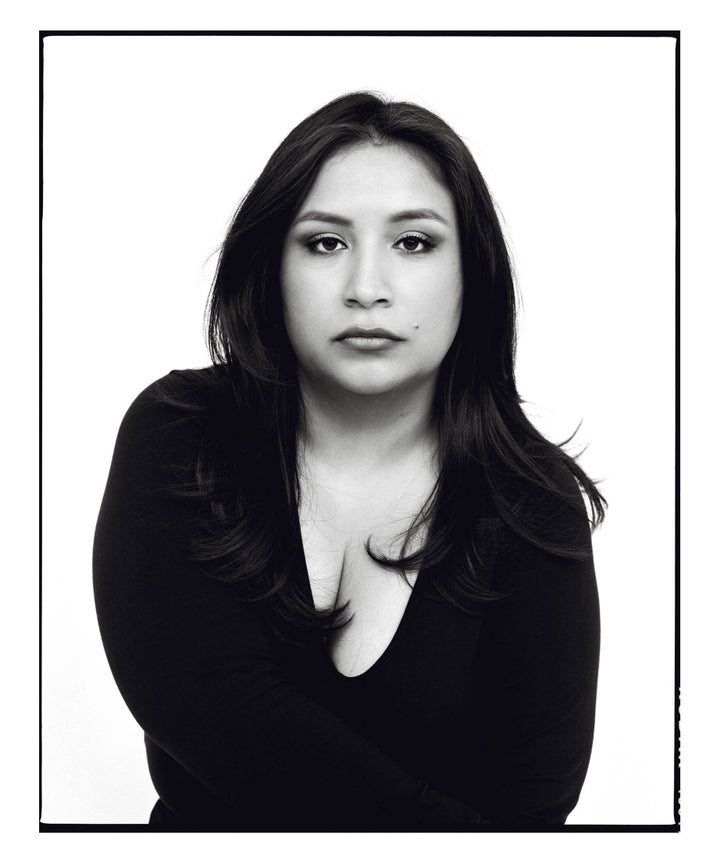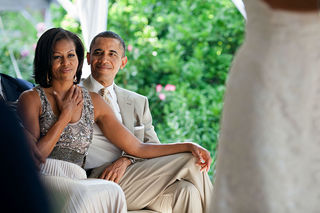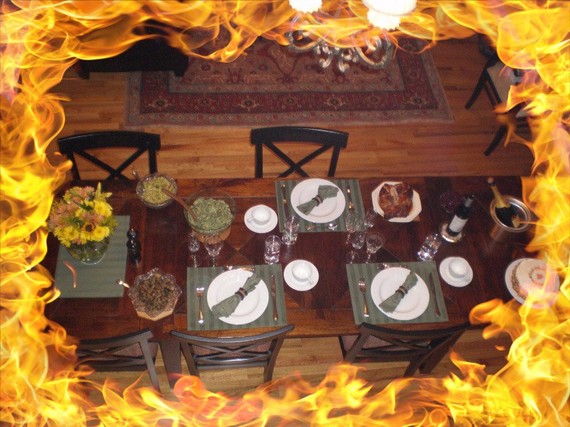I recently had the privilege to be interviewed by Psych2Go–a website that aims to raise awareness about mental health in an accessible and relatable form. Below is my conversation with Gabi Morales of Psych2Go, about the performing art of relationships. (Here is the link to the original article).

P2G: You work as a psychotherapist but you’re also an actor. Do you think one field helps you develop the other?
MOC: Absolutely. Psychotherapy and acting are similar art forms. They both seek to recognize a life in all of its complexity, and to make meaning of that life. Both art forms require rigorous self reflection, emotional accessibility, and most of all the capacity to walk in another person’s shoes.
My experience as an actor prepares me to engage in a collaborative, creative process: to not know who a person is upon the first reading of a script; to not “play the end of the scene,” as we say as actors, but to be present in each moment of the journey; to be constantly curious; to make efforts to empathize with people who are not me, to find those people in me, and to find me in them, but also to be challenged and changed by aspects of them that are not at all like me. Acting also prepares me to be in “scenes” with other people, to be vulnerable and intimate with them, but within clear boundaries.
And without a doubt, I’m a better actor now having been a therapist for so many years. My experience diving into the deep end of myriad, unique lives, has expanded my capacity to identify with a variety of people, and essentially to “be” so many more different versions of myself than I could have possibly been years ago.
P2G: In your book, Modern Brides & Modern Grooms, for example, you give answers on how to plan and get through the wedding as both. Would you explain?
MOC: In writing Modern Brides & Modern Grooms, I was interested in the timely question of How do you express yourself authentically—in a wedding, a marriage, a family, and even a country…—and stay connected to other people at the same time? And that is a central question for an actor too. How do I find myself in this character, whose story is not mine? How do I play this scene in a way that expresses myself truthfully, but also makes room for the other actor? How do I say what I want to say in this performance, but make sure the audience is following me as well?
A lot of the dilemmas couples face in wedding planning can be navigated by asking themselves those questions. And so, I show readers how to collaborate, negotiate and survive relational conflicts effectively the way a performing artist does. Not only to decide what color napkins to use for table settings, or the DJ or ice sculpture they want for that one big event, but more significantly how to recognize each other’s emotional needs in every moment of every day. How to make complex decisions involving family, friends, and community. How to include them in your event and in your lives, in a meaningful way that works for everyone. This process of communication and reflection is great preparation for every other major crossroads couples face throughout their lives—from family planning, to the question of where to live, how to host holidays together, how to negotiate sexual needs, and how to support each other in professional and creative endeavors.
Like theater–and a therapy treatment and a life–a wedding is a performing artform, and the questions we ask are always more crucial than the answers.
P2G: Your book has been praised for its inclusivity. It’s clear that you don’t believe in one canon of the “normal” and “perfect” couple. However, do you think there are certain aspects of the married life that repeat themselves in every couple?
MOC: I do. And not only in romantic couples, but in any two people in relationship: e.g., friends, siblings, parents and children, roommates, colleagues. I actually hope that couples therapy eventually becomes popular for lots of people in conflict, not just lovers. The root of so many conflicts between two people is the unwillingness, or perhaps inability, to simply let the other person know that you understand how they feel and why they feel that way, whether or not you agree with them. It makes such a difference just to know that your experience is held in another person’s mind, even if they have different opinions than you about certain things. If they are curious about your experience and have made the effort to imagine seeing the world through your eyes, and have taken it upon themselves to let you know this!, you are more likely to listen to each other. To take in a different perspective and to mull it over, and perhaps even be influenced and changed by that other perspective.
But there are certainly patterns that are specific to romantic pairs. I typically see what I call one “engulfed” person and one “abandoned” in every partnership. Which sounds categorical and reductive, but it’s really not. It has much much less to do with external qualities such as gender, physicality, or personality, and more to do with the very particular ways each of us has learned to attach emotionally to partners. We choose complimentary people as lovers, who remind us of our primary caretakers, which is exciting at first, but quickly becomes frustrating. So a lot of the work in couples therapy is to bring this all to the surface so that each partner can understand better their own specific expectations of the other person, to verbalize where they’re coming from, and also to listen listen listen to the other person’s specific experience at the same time. I always remind couples that one of them sees the sky as yellow and the other sees it as pink. Neither sees a blue sky. Neither is right or wrong, but they both have to recognize that the sky is different for each of them in order to move through any of their conflicts.
P2G: You mention in your article for Psychology Today–titled, “Straight Life Cycle/Queer Life”— the normal stages of development by Erik Erikson. Do you think these stages are still (or have ever been) “normal” in the modern world?
MOC: I think Erikson’s stages are incredibly useful as a reference when we think about the various ways each of us functions in relationships, particularly when we consider how that is informed by our experiences in childhood and adolescence. So much of my work as a therapist is to help people repair the relational ruptures that occurred during those formative years, when they may not have learned to truly trust another person and never felt secure enough to take risks and discover their full potential as social beings. However, as I alluded to in the article (which I originally wrote for Psychotherapy.net), those stages can get in our heads, like any other socially expected milestone, and make us feel like we’ve failed at life–if we don’t marry by a certain age, for example; or if our career has not become OBVIOUSLY successful–to our parents, our friends, and social mediafollowers–by a certain age; or if we don’t have kids, etc. etc. I think that as a culture we are finding more breathing room, for all of us really, to live meaningful and fulfilling lives that don’t necessarily follow a strict, traditional, expected path or normative stages.
P2G: Do you think these milestones have a way of making us feel better because they are what society expects from us?
MOC: Yes, they can. Until they don’t. Until we realize that our lives don’t fit neatly into boxes of someone else’s making. We recognize this more and more as we grow.
P2G: How has your personal life experience and your professional career as a psychotherapist changed your vision about these “normal stages of life”?
MOC: Well I was never on a normative path. I was a gender nonconformingproto-gay boy from the start, and my earliest memories include adults being uncomfortable with me. Fortunately my parents did their best to help me be myself, and bought me the unicorns and Missy Piggy dolls I asked for, but even so, the message that I was “different” reached me again and again from family, from school, and the community in which I lived. I learned early on that the glass slipper was never going to fit, and that my options were to torture myself by cutting off my heels and toes, or to accept that the Prince of “normal” was never gonna choose me. That I would never be able to successfully hide inside the “normal” closet, and I’d have to find my own ways to be happy. Now, that wisdom came from a lot of trial and error, and painfully mortifying attempts to “fit in” and actively hating myself, especially during my early adolescence. But, painful as it was, that experience forced me to take my own side, and to be awake at the wheel of my life. If I was going to truly exist in the world, I would have to be attentive to my needs, to advocate for myself, to ruffle some feathers by default, and to carve out space to live and love, like anyone else.
That experience taught me that each individual person’s timeline is different, and we often do ourselves a disservice by thinking about where we “should” be in terms of “normal life stages.” I was WAY behind my peers in school in terms of being able to openly express and share sexual and romantic desires and interests, for example, and that’s a huge part of one’s development. But being necessarily internal and in my head, and being bullied at school, led me to go to college early, to escape, and so I achieved higher education goals well before most people my age typically do. So I was behind in some ways, ahead in others, and ultimately I found my own way to live an integrated life.
And the privilege of being a therapist, and getting to know the interior of so many unique people, continues to teach me how each of us truly must find our own way, in our own time, at our own pace.
P2G: What motivated you to become a psychotherapist?
MOC: The same thing that motivated me to be an actor: an endless interest in people. Everything about people interests me. Every little detail. Their voices, mannerisms, preferences, favorite movies or bits of poetry, their daydreams, heartbreak, worries, hangups, the random sound bites that stick in their heads. Clients occasionally tell me they fear they’re not interesting enough for me, or that I might get bored if they talk freely about what’s actually on their mind. And I always respond with the truth, which is that as long as it’s true, I’ll never get bored. The only thing I ever find boring -in art or in life- is when someone is lying or covering something, up. Boredom is usually my first clue that something’s not being fully expressed. And even then, I’m interested in the fact that something’s boring me and I want to know why that is, what’s happening within the person to make that happen. I’m endlessly interested in how each person uniquely expresses her or himself. So even when I was in grad school for acting, I knew I would one day be a therapist, because I knew I loved to listen. Simply listening to another person, really listening to them, is an exquisitely beautiful, powerful and transformative thing.
I’ll never forget one night in college, I was at a frat party, and a sweet, bookish girl came over to talk to me–recognizing a kindred misfit in me, I suppose. She knew I did theater at the school and asked me how she could get involved, and told me why she wanted to give it a try even though she’d never been on stage before, and I really enjoyed listening to her story. I don’t remember saying much, but as we parted she said, “Thank you for talking to me. You made me feel so much better about life.” And I thought, wow, if I could help someone feel better about being alive, just by listening to them–with hooting and hollering and keg stands in the background–I should probably take that as a sign. So, I guess my therapy calling happened in the most ironic place possible for a boy who collected unicorns as a kid: a rough-and-tumble, Road-House-style, frat party.
P2G: What advice would you give to all the young millennial couples out there?
MOC: Put the phone down. Look your partner in the eye, and listen to her or him. Really listen. And share something true about yourself, in a complete thought, in a complete sentence, without looking at your phone. And then listen some more. (Also, watch “Black Mirror,” and learn from it…) Be mindful of screens and how they function in your life; how they steal you away from your loved ones. Notice your tendencies to avoid and escape human-to-human contact or conflict, by losing yourselves in your screens. It’s becoming easier and easier to escape from each other with each new day, each new device, and each new app.
Life is short and messy, and it never gets better than the relationships we are able to have, to hold, and to grow. By which I mean real relationships: the ones, that remain durable when we are face-to-face. One more thing: Psychotherapy can be a great dress rehearsal to improve your relationships in real life.










